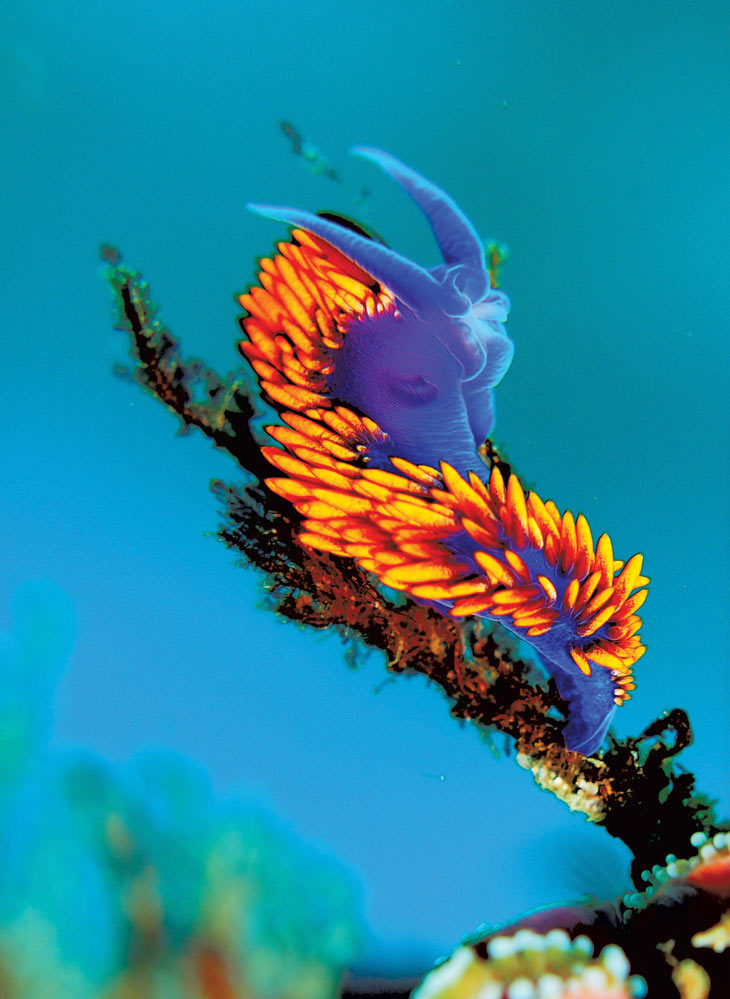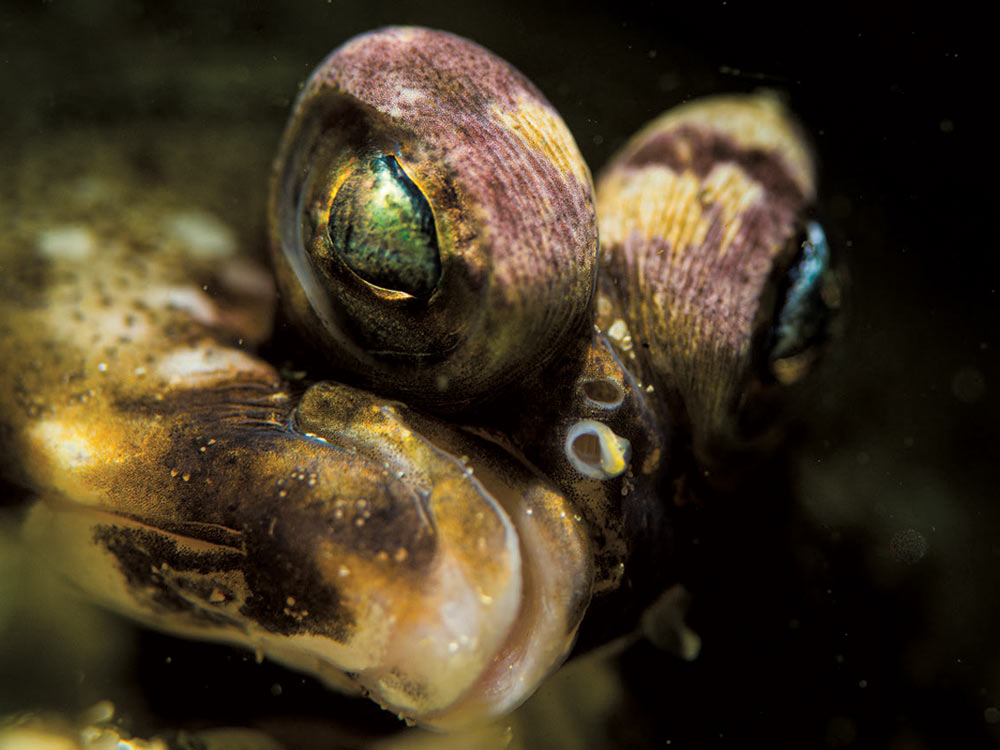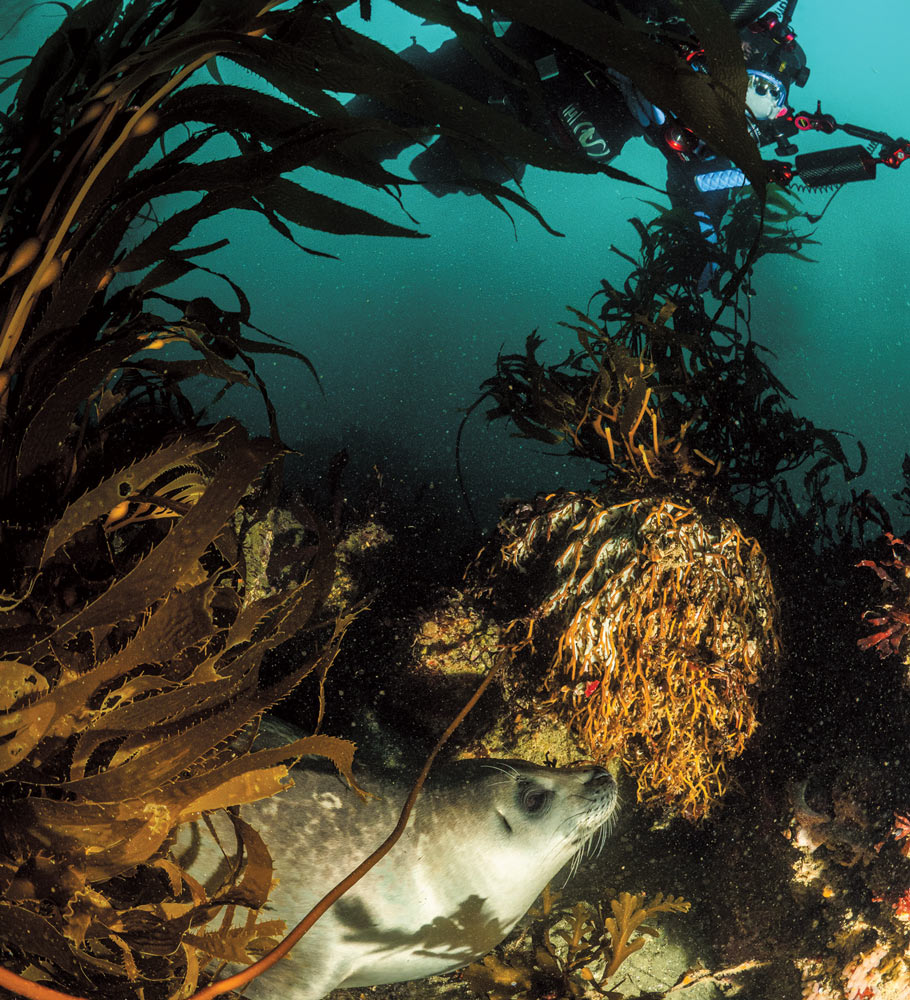Directly out from McAbee beach in Monterey there are two dive sites. The site that is close to shore is referred to as McAbee beach and is easily accessible via a surface swim from shore. This site is characterized by isolated rock outcroppings (mini pinnacles) surrounded by sand and a few abandoned cement pipes from the Cannery Row glory days. I have been able to get my wife to dive here with me if I call this Ghirardelli Beach (Ghirardelli Chocolate shop customers have prime diver viewing opportunities). There is a second site, which is further out. It has similar structure, but the pinnacles are taller. This location is called McAbee Pinnacle.

Spanish Shawl nudibranch hanging out in the current. Photo by Bruce Sudweeks.
The McAbee Pinnacle dive site is a rather long surface swim from McAbee beach, so the best options are kayak or boat access. The granite pinnacle at this location is not nearly as impressive as the similarly named structures in Carmel Bay or near Point Lobos. But this site has a lot of great attributes. One such attribute is that the location is somewhat protected and is a good option for divers of all abilities. Macro underwater photography is a good choice since there is often a wide variety of nudibranch species in and around the pinnacle. On my most recent dive I spotted Spanish Shawl (Flabellina iodinea), Hopkin’s rose (Okenia rosacea), Horned Aeolid (Hermissenda crassicornis), San Diego Dorid (Diaulula sandiegensis), Yellow-edged Cadlina (Cadlina luteomarginata), and the ever-present Sea Lemon (Peltodoris nobilis). Nudibranchs can be considered the signature attraction of this dive site.
Marine life inhabits every crevice of the pinnacle. Bay and black-eyed gobies, and many species of sculpin use the cracks as home. I have seen pacific sunfish (Mola mola) in the area during my dives so look up on occasion while examining all the crevices on the pinnacle. Also, check for flatfish in the sand around the pinnacle. I have had speckled sanddabs (Citharichthys stigmaeus) photo-bomb my shots. These flatfish are as curious as puppies. On a recent dive I spotted a fantail sole (Xystreurys liolepis). C-O sole (Pleuronichthys coenosus) also inhabit this locale. The rockfish that live in the area are typically juveniles. Shrimp and crabs are commonly sighted in and around the pinnacle. A portion of the pinnacle is covered in strawberry anemones (Corynactis californica). I have also seen blood sea stars (Henricia leviuscula) at this site.

A sole C-O Sole. Photo by Bruce Sudweeks.
McAbee Pinnacle resides in the Edward F. Ricketts State Marine Conservation Area which means that only fishing for finfish by hook and line is permitted. The marine protected area designation has proven to improve the density of life in the area.
Compared to some of the other areas in Monterey Bay the kelp health in the general area of McAbee Pinnacle has fared moderately well since the purple urchin invasion began in 2014. The main species that is present is the giant kelp. Sea Otter sightings are relatively common in and around kelp. Also, great egrets look as if they are walking on water when they perch on the kelp waiting for an unsuspecting fish to pass by. Harbor seals may play hide-and-seek with you during your dive.

A seal playing hide-and-seek with the divers. Photo by Bruce Sudweeks.
Boat traffic is a concern so exercise care when surfacing. A surface marker buoy is wise to have on hand for this dive site. The location is popular with the dive operators that launch from Monterey Harbor. This site is a good option when leaving the bay is not advisable.







